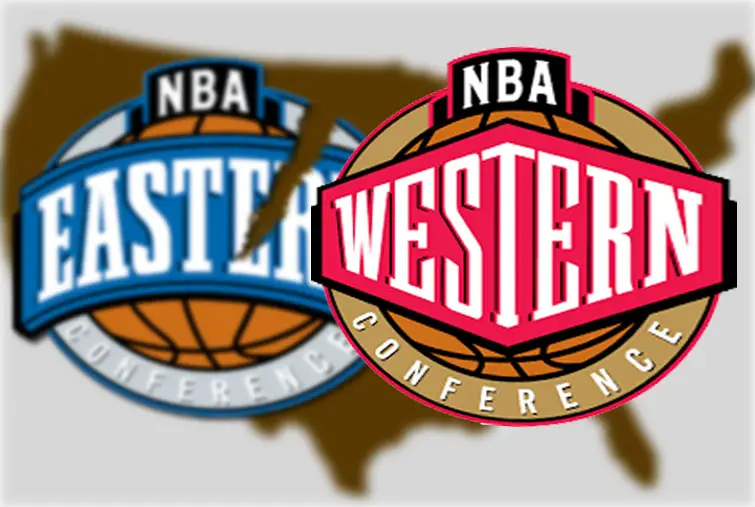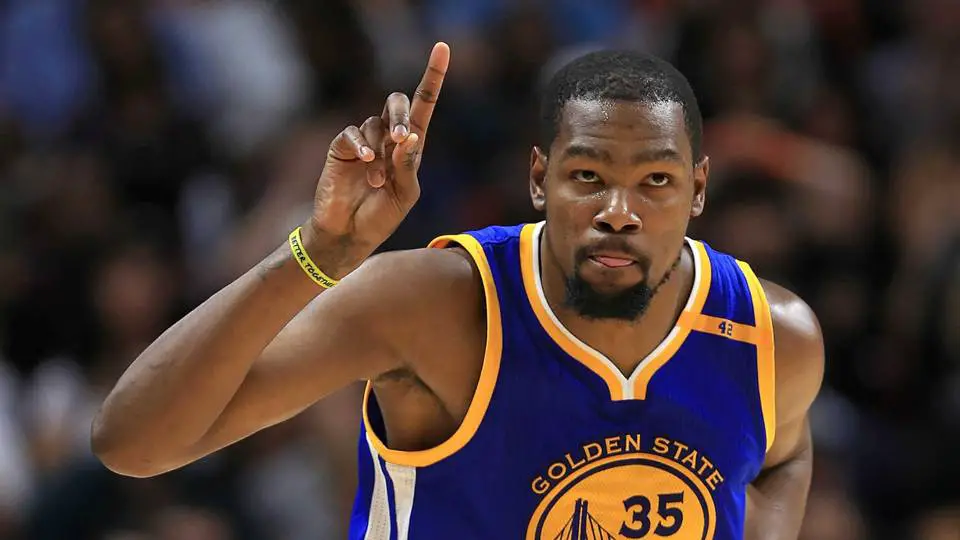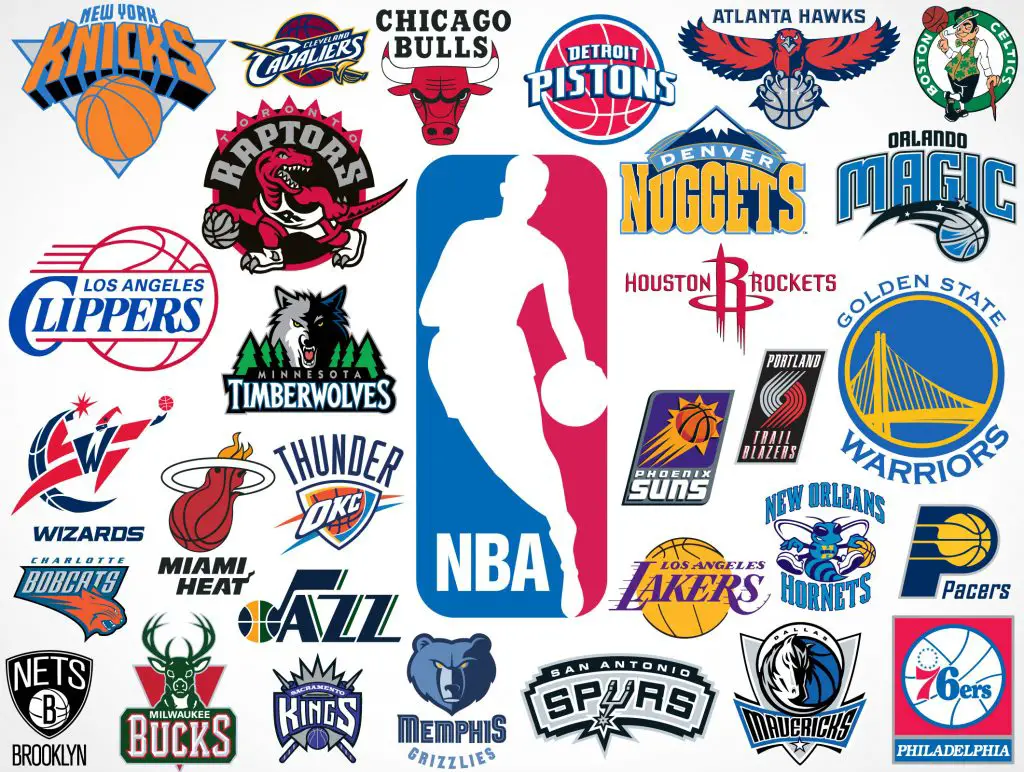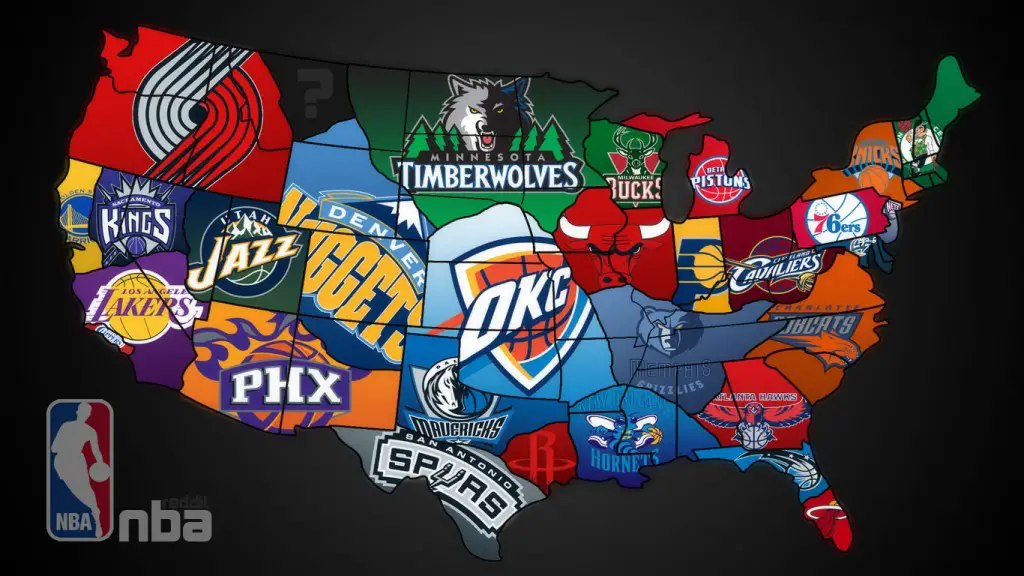For as long as I can remember, the West has been the more exciting conference. From Shaq’s Lakers and Steve Nash’s Suns to Tim Duncan’s Spurs and Kevin Durant’s Thunder to the super-team Warriors, nowadays, great teams are more often out West.
That’s not to say that the East doesn’t have great teams. LeBron has always been in the East; the first big three in the 2000s was found in Boston; the new age Pistons Bad Boys were in Detroit.
The problem comes down to depth. Western teams get the best free agents, make the best trades and draft the best players, and, because of it, have better teams from top to bottom.
It kind of makes sense, too. When these star players hit the market, out West there are teams in bright cities like Los Angeles, Houston and San Francisco, while back East there are many cities that are—let’s say not as prestigious, like Milwaukee, Detroit or Indianapolis.
The West is sexy; the East is cold.

But LeBron’s out East—that counts for something, right?
LeBron’s Cavs, the best team in the East by far for the past three seasons, won fifty-one games last season. Fifty-one wins is enough for the second seed in the East, but only the sixth seed in the West. It simply takes less to win in the Eastern Conference. But things can, and always do, go worse for the East.
This offseason, Eastern teams lost their stars to the West at an unprecedented rate. Chicago’s Jimmy Butler was jettisoned to Minnesota, Indiana’s Paul George landed in Oklahoma City and Atlanta’s Paul Millsap signed with Denver as all three of those blue-blood franchises begin their descent into irrelevance.
The only star to move from West to East this offseason just allowed the rich to get richer, as number-one seeded Boston landed Utah star Gordon Heyward.
As bad as the Eastern Conference playoffs were last year, expect things to look even worse next year.
Figuring Out Max Contracts
The last NBA Collective Bargaining Agreement (CBA) attempted to revive any parity in the NBA by allowing max contracts to encourage team loyalty. Under the new deal, the best players could earn “Super-Max” deals under the Designated Player Veteran (DPV) Exception. The DPV allows veterans of at least eight NBA seasons who have either made an All-NBA team, Defensive Player of the Year or won MVP in the past three seasons, and have never changed teams via free agency or trade, to receive the highest-paid contracts in basketball.
This provision was made not only to make sure that the best players are getting the most, so that a guy like Mike Conley (zero all-stars) won’t be making more than LeBron James or Steph Curry, but also to make sure the best stay put in free agency. The hope was that star players wouldn’t leave so much money on the table to abandon ship.
Kevin Durant threw a wrench in that plan.
In 2015, a year before the massive climb in the salary cap, KD hit free agency. If he had chosen to stay with OKC, he could have landed a $230 million six-year contract. The most he could make if he left was $114 million over four years. The cash incentive wasn’t enough, as KD bounced to Golden State.
Instead, Durant signed a $54 million deal over two years with a player option after the first year with the Warriors. The assumption was that KD would opt out after his first season and make upwards of $36 million a year with the cap spike, but that didn’t happen either.
KD opted out of his deal after winning a championship with the Warriors, but instead of taking the lucrative contract that he was owed, KD took a $20 million pay cut so the team could resign Andre Iguodala and Shaun Livingston, while allowing Steph to sign the largest contract in history with a $201 million deal.

Hayward left $44.55 million on the table to defect to Utah, Chris Paul left a $201 contract in LA, while George left $70 million on the table when he demanded out of Indiana.
The cash incentive for the max deals hasn’t worked because most stars now care about winning more than money.
The solution: get rid of max contracts all together. If teams have restrictions on how much they can pay their star players, even loyalty bonuses won’t be enough to prevent them from defecting to more exciting venues. Strip away the restrictions and teams will have a lot more leeway to throw absurd amounts of cash around to retain their cornerstones.
If George had a chance to make $100 million more, Heyward $70 million more and Paul $300 million, things get a little more interesting in free agency.
Making Big City Teams Good Again
If the NBA eliminated the max contracts, the biggest winner would be the largest franchise with the most money.
I know what you’re thinking: Wouldn’t that do further damage to NBA parity?
Good question, but no.
Outside of San Francisco, Boston and Houston, big-market NBA teams are in the toilet. The Brooklyn Nets, Los Angeles Lakers, New York Knicks, Philadelphia 76ers and Dallas Mavericks have been some of the worst teams in basketball the last few years, while Chicago, Indiana and Atlanta are about to join them.
But what if the NBA followed the MLB model?
If the biggest teams, like the Yankees in baseball, could shell out more cash than everyone else, they have the best opportunity to land the biggest free agents. It’s worked for years with the Yankees, as they could afford to outbid everyone for the biggest free agents. That same model could allow New York, Philly and Chicago to become free agency destinations again.
Cleveland are undoubtedly the kings of the East, but that all changes when LeBron leaves. Then the champion Cavs just become Cleveland again—and no one wants to play in Cleveland.
The NBA needs its biggest and most historic Eastern Conference teams to find their footing, and quickly. If Chicago, Brooklyn, New York, Philadelphia and Miami aren’t relevant in the next few years, more and more NBA talent will continue to scorn the East and join better teams in smaller Western markets, like Oklahoma City, San Antonio and Minnesota.
If the East is ever going to get back on its pedestal it needs success in its biggest markets to get it there.
Altering Playoff Structure
All that being said, for better or worse, the NBA is stuck in its current situation. The CBA agreement will last another six years, and until then, max-contracts are the law of the land. Without it, teams will have to work within the framework of a failed system.
In addition, Chicago, New York and Brooklyn are garbage teams; I don’t see that changing any time soon. The only hope for big market teams in the East is the Sixers.

After using “The Process” to accumulate players with game-changing potential in Joel Embiid, Ben Simmons and Markelle Fultz, the Sixers have the most exciting young team in basketball. The problem is that’s a lot of pressure on three injury-ridden kids, none of whom have ever played a full season of NBA basketball.
The best thing the NBA can do in the meantime is to completely alter the playoff structure.
While making the best eight has been an arduous task for Western Conference teams the last few years, the bottom of the East has been a joke. When bad teams are making the playoffs, like the 38-44 Brooklyn Nets in 2014, or the 38-44 Atlanta Hawks in 2013, or the 37-45 Indiana Pacers in 2011, many suggested that the East didn’t deserve eight playoff teams.
Instead of the eight best in each conference, why not make it the best sixteen teams in the NBA, regardless of conference?
If you make it the best sixteen, the excitement over the playoffs would be reenergized, the regular season would matter again, good Western teams could finally make it into the playoffs and it would push the Eastern Conference to make significant progress.
To put it in perspective, if the NBA had the best-sixteen structure in the playoffs last year, the top three seeds would’ve been from the West, the East would only have had two teams in the top seven and the Eastern champs Cavs would’ve been a number-seven seed.
In a season with much more inequity, like 2014, the West would have had ten teams in the playoffs to the East’s six.
Fans are dying for a respectable playoff season. After last season’s debacle in the post-season, the time is now. If that means that the Cavs have to play a team like OKC in the first round, so be it.
No longer can the East continue to play mediocre basketball yet still sport eight teams in the playoffs. It’s time for the East to shape up, even if it means giving them a good kick in the ass to get them there.














[…] View Reddit by Wreck003 – View Source […]